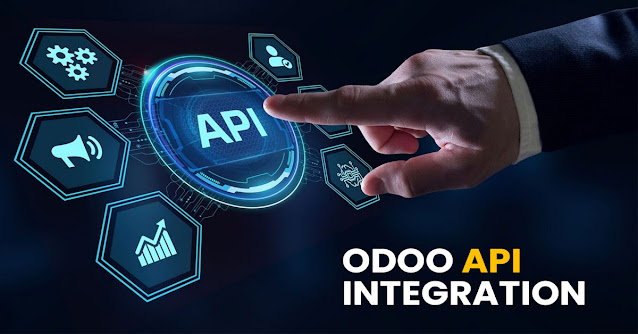Seamless Connectivity: Enhancing Business with Odoo API Integration
Integration is essential for success and efficiency in today's increasingly linked and hectic corporate world. Businesses may expedite processes, reduce duplication of work, and enhance data quality and accessibility by integrating diverse software applications and systems.
Odoo is a strong and adaptable corporate management tool that provides a variety of integrated apps and modules to aid organizations in streamlining their processes, boosting productivity, and spurring development. To achieve a successful deployment, thorough planning, preparation, and execution are necessary when integrating Odoo with other software platforms.
To assist you get the most out of your investment in this potent software, we will examine the essential phases of Odoo Integration in this blog article.
Step 1: Identify your integration requirements
It's crucial to determine your integration needs before starting your Odoo Integration. Analyzing your current processes and systems can help you identify which software programmes and hardware ought to be connected with Odoo.
You could need to connect Odoo with your production planning software, quality control system, and inventory management system, for instance, if your business is a manufacturing one. You might need to connect Odoo with your project management software, time tracking system, and customer relationship management (CRM) system if your company provides services.
You may avoid wasting time and money on pointless integrations by determining your integration needs in advance and ensuring that your Odoo integration is suited to your unique needs.
Step 2: Choose the right integration partner
Odoo integration is a difficult procedure that needs technical know-how, project management talents, and a thorough comprehension of the capabilities of the programme. To help you through the process, picking the appropriate integration partner is crucial.
Look for a business that has a track record of experience connecting Odoo with other software systems when selecting an integration partner. To achieve a successful integration, they should have a team of skilled engineers, project managers, and consultants that can collaborate closely with your team.
Step 3: Plan your integration
It's time to begin planning your integration once you've determined your integration needs and selected an integration partner. To do this, a thorough project plan must be created, outlining the project's objectives, timetable, and resources needed, and major checkpoints.
Together, you and your integration partner should create a project strategy that takes into consideration your unique requirements and goals. Also, they ought to offer advice on best practices and assist you in avoiding typical dangers that might thwart an Odoo integration.
Step 4: Develop integration connectors
When the planning stage is finished, you may start creating integration connectors to link Odoo to your other software programmes. Software modules called integration connectors make it easier to transmit data between Odoo and other systems.
To create connection connectors that satisfy your unique integration requirements, your integration partner should collaborate closely with you. This can entail creating a new connector from scratch or using pre-made connectors.
Step 5: Test and validate
It's crucial to test and validate the integration after the integration connections have been created to make sure it functions properly and satisfies your business needs.
Before launching the integration, your integration partner should carry out extensive testing to find and address any issues.
Before launching the integration, your integration partner should carry out extensive testing to find and address any issues. User acceptability testing, integration testing, and unit testing may all be included.
Step 6: Train your team
User acceptance is one of the most important elements of an effective Odoo integration. It's crucial to offer thorough training to guarantee that your staff can utilize the integration efficiently.
The training you receive from your integration partner should cover how to utilize the integration efficiently, how to use the user interface, how to carry out certain activities, and how to make the most of all available capabilities. For your staff to benefit fully from the integration, they should also offer continuous support and training.
Step 7: Continue to back up
In order for the integration to continue to satisfy your company needs over time, it must be maintained and supported after it has been finished.
To monitor the integration, find and resolve any problems, and provide updates and upgrades as necessary, your integration partner should offer continuous support and maintenance.
In conclusion, integrating Odoo with other software systems can be a complex process, but by following the key steps outlined above and best practices, you can ensure a successful integration that delivers real value to your business. With the help of an experienced integration partner, comprehensive training, and ongoing support, you can streamline your operations, eliminate duplication of efforts, and improve data accuracy and accessibility with Odoo.
Read More Related Article:-
Seamless Transformation: Navigating Business Success with Odoo ERP Implementation
Unlocking Business Potential: Navigating ERP Development for Success
Reference:-



Comments
Post a Comment